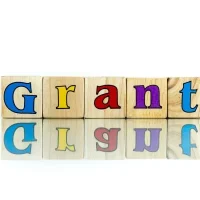Navigating the world of grant writing begins with a thorough understanding of the grant requirements set forth by funding organizations. Each grant has its own specific criteria, which can include eligibility requirements, project scope, and funding limits. Before diving into the writing process, it is crucial for NGOs to meticulously review the guidelines provided by the grantor.
This involves not only reading the application instructions but also understanding the mission and priorities of the funding organization. By aligning your project with the funder’s goals, you increase your chances of securing financial support. Moreover, understanding the grant requirements extends beyond just the written guidelines.
It is beneficial to research past recipients of the grant to gain insights into successful proposals. This can provide valuable context regarding what the funder values in a project and how they measure success. Additionally, attending informational webinars or workshops hosted by the funding organization can offer clarity on any ambiguous points in the application process.
By taking these proactive steps, NGOs can ensure they are well-prepared to meet the expectations of potential funders.
Crafting a Compelling Narrative
Defining the Problem and Its Urgency
Once you have a thorough understanding of the grant requirements, the next step is to create a captivating narrative that conveys the essence of your project. A well-written narrative not only outlines your objectives but also tells a story that resonates with the reader. Start by clearly defining the problem your project aims to address, using data and personal anecdotes to illustrate the urgency and significance of the issue.
Articulating a Vision for Change
In addition to presenting a clear problem statement, your narrative should articulate a vision for change. Describe how your project will make a tangible difference in the community and outline your proposed strategies for achieving this impact. It is essential to convey passion and commitment throughout your narrative, as funders are often looking for projects led by dedicated individuals or organizations.
Strengthening Your Narrative with Testimonials and Case Studies
Incorporating testimonials or case studies from previous initiatives can further strengthen your narrative by demonstrating your organization’s capacity to deliver results. By including these elements, you can engage the reader emotionally and intellectually, painting a vivid picture of the challenges faced by your target population and the positive impact your project can have.
Developing a Clear and Detailed Budget
A well-structured budget is a critical component of any grant proposal, as it provides funders with a transparent view of how their money will be utilized. When developing your budget, it is important to be both realistic and detailed. Begin by listing all anticipated expenses associated with your project, including personnel costs, materials, travel, and overhead.
Each line item should be justified with clear explanations of why these expenses are necessary for achieving your project goals. In addition to outlining expenses, consider including a budget narrative that explains how you arrived at each figure. This narrative can help funders understand your thought process and demonstrate that you have conducted thorough research on costs.
Furthermore, if applicable, indicate any other sources of funding or in-kind contributions that will support your project. This not only shows that you have a diversified funding strategy but also reassures funders that their investment will be part of a larger effort to achieve success.
Highlighting the Impact and Outcomes
Funders are increasingly focused on the impact and outcomes of projects they support. Therefore, it is essential to clearly articulate how your project will create meaningful change in the community. Start by defining specific, measurable outcomes that you aim to achieve through your initiative.
These outcomes should be aligned with both your project goals and the priorities of the funding organization. For instance, if your project focuses on education, you might set targets related to student performance or engagement levels. In addition to outlining expected outcomes, it is important to describe how you will measure success.
This could involve developing evaluation metrics or utilizing existing assessment tools to track progress over time. By demonstrating a commitment to accountability and continuous improvement, you can instill confidence in funders that their investment will yield positive results. Furthermore, consider discussing how you plan to share findings and lessons learned with stakeholders and the broader community, as this can enhance your project’s visibility and sustainability.
Building Strong Partnerships and Collaborations
In today’s competitive funding landscape, building strong partnerships and collaborations can significantly enhance your grant proposal. Funders often look favorably upon projects that demonstrate collaboration among multiple organizations or stakeholders, as this can indicate a broader commitment to addressing community needs. Start by identifying potential partners who share similar goals or have complementary expertise.
This could include other NGOs, government agencies, academic institutions, or local businesses. Once you have identified potential partners, engage them in meaningful discussions about how you can work together to achieve common objectives. Clearly define each partner’s role in the project and outline how their contributions will enhance overall effectiveness.
Including letters of support from partners in your grant application can further strengthen your proposal by showcasing a united front and demonstrating community buy-in for your initiative. Ultimately, strong partnerships not only bolster your proposal but also enhance the sustainability and impact of your project.
Reviewing and Editing for Clarity and Consistency
The final step in the grant writing process involves reviewing and editing your proposal for clarity and consistency. A well-polished application is essential for making a positive impression on funders; therefore, take the time to carefully proofread your document for grammatical errors, typos, and formatting inconsistencies. Consider enlisting colleagues or external reviewers to provide feedback on your proposal.
Fresh eyes can often catch mistakes or unclear language that you may have overlooked. In addition to proofreading for errors, ensure that your proposal flows logically from one section to another. Each part of your application should build upon the previous sections while maintaining a cohesive narrative throughout.
Consistency in language, tone, and formatting is crucial for creating a professional appearance that reflects positively on your organization. By dedicating time to review and refine your proposal, you increase its chances of standing out among numerous submissions and ultimately securing funding for your important work. In conclusion, mastering grant writing requires a multifaceted approach that encompasses understanding requirements, crafting compelling narratives, developing detailed budgets, highlighting impact, building partnerships, and thorough editing.
By implementing these strategies, NGOs can enhance their ability to secure funding and effectively advance their missions in service of their communities.








































